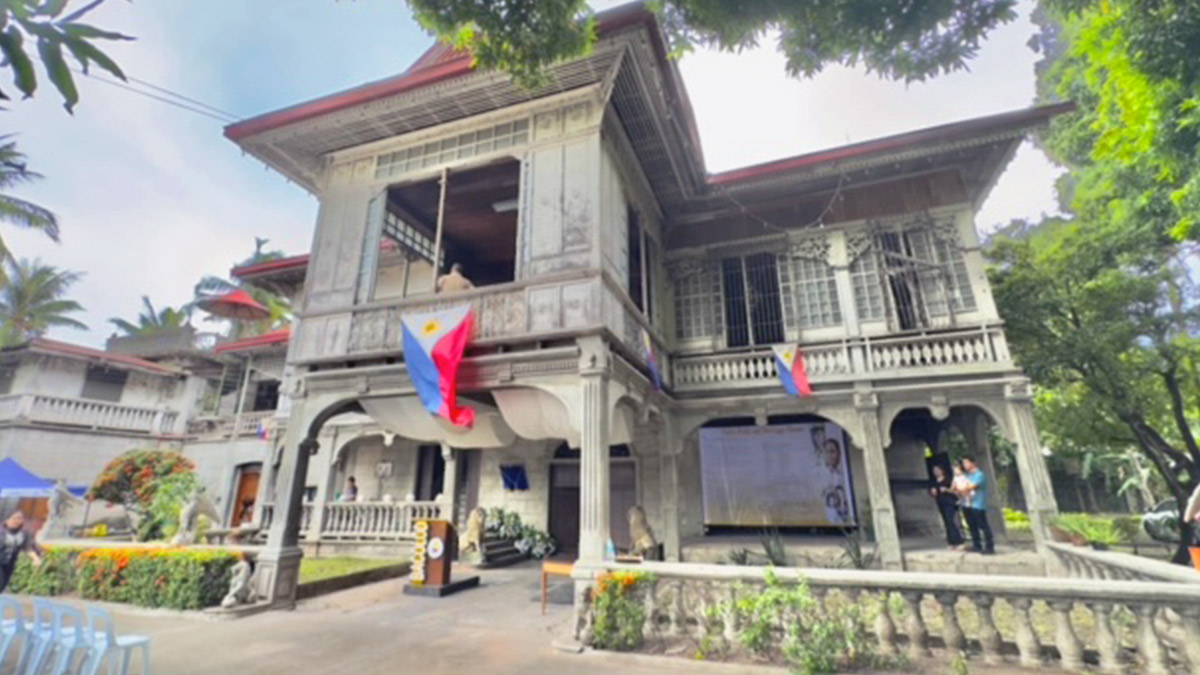Negros Occidental lists 7 sites for world heritage bid with Unesco

YULO’S PARK This 1919 home of Don Mariano Yulo, former governor of Negros Occidental and a senator during the Commonwealth period, is located on Rosario Street in Bacolod City. Now called Yulo’s Park, the mansion is an important cultural property and historical landmark in Negros Occidental. —Ronnie Baldonado
BACOLOD CITY, NEGROS OCCIDENTAL, Philippines — The historical body of Negros Occidental has listed seven local landmarks under the “Sugar Cultural Landscape of Negros” that are now under the tentative list of world heritage sites of the United Nations Educational, Scientific and Cultural Organization (Unesco).
Solomon Locsin, chairperson of the Negros Occidental Historical Council, said they were considering adding two more for inclusion in the list, the Balay Ni Tan Juan in Bago City and the Negros Occidental Capitol in Bacolod City.
Seven sites were already in the Unesco tentative list of world heritage sites—the Historic Center of Silay City, the Hawaiian-Philippine Company in Silay City, Victorias Milling Company in Victorias City, Hacienda Rosalia in Manapla town, Balay ni Tana Dicang in Talisay City, the Aniceto Lacson Ancestral House in Talisay City and the Yulo’s Park house in Bacolod City.
READ: 7 PH sites added to Unesco World Heritage tentative list
Sugar industry’s legacy
Locsin said these sites reflect a significant picture of Negros’ history as well as the journey of sugar production on the island, which has been the main economic driver of Negros for over a century until the present. The Sugar Cultural Landscape of Negros highlights the legacy of the sugar industry brought about by the industrialization of sugar production in the late 18th century.
Article continues after this advertisement“These sites have captured the urban setting, the wealth and the history of the region. It reflects the social and economic dynamics of the late Spanish-colonial and American-colonial eras,” read the nomination submitted by the Permanent Delegation of the Philippines to Unesco.
Article continues after this advertisementLocsin said their recommendation was leaning toward the inclusion of the Balay Ni Tan Juan in Bago as it represents the legacy of the Araneta family to the sugar industry.
The Balay in Tan Juan, built in the 1800s at the center of Bago City, is the ancestral home of the family of sugar baron-turned-revolutionary hero Gen. Juan Araneta. It was donated to the city government in 1978 and was restored and turned into museum after it was named a National Historical Landmark by the National Historical Commission.
The Capitol building, on the other hand, represents the role of the state in the sugar cultural landscape, as its “architectural grandeur is noteworthy,” added Locsin.
The capitol is a neoclassical Beaux Art building that was constructed in 1927 and completed in 1935 designed by famed Filipino architect Juan M. Arellano, who also designed the Manila Metropolitan Theater.
The Historic Center of Silay City, which boasts a large collection of preserved heritage houses, was earlier declared by the National Historical Commission of the Philippines as part of the Silay National Historical Landmark.
Testament of hard work
From the halls of its museums, heritage houses and treasured family recipes, Silay City holds one of the keys to Negros Island’s cultural identity and historical prominence.
The Hawaiian-Philippine Company in Negros Occidental, on the other hand, holds the distinction of being the oldest running sugar mill on the island.
The artisanal muscovado sugar from the Hawaiian-Philippine Company embodies the hard work that comes with sugar production.
The Victorias Milling Company (VMC) has also secured its place in the province’s history as one of the earliest modern sugar mills in the Philippines.
Founded on May 7, 1919, the VMC was entirely devoted to sugar—from raw sugar production to the refined sweetness that graced tables.
Timeless elegance
The Hacienda Rosalia in Manapla town, for its part, traces its roots back to the 1930s. It is the ancestral home of the Gaston family, who descended from Yves Gaston from Normandy France.
A unique landmark inside its compound is the Chapel of the Cartwheels, which is entirely made from repurposed farm implements.
Discarded wooden bullcart wheels form its walls, windows and even the circular footprint of the chapel pay homage to the labor of farmers tilling the sugar fields.
The Balay ni Tana Dicang along Rizal Street in Talisay City, an 1883 ancestral home known for its timeless elegance, was also included in the list.
The house was once the residence of sugar baron Don Efigenio Lizares and Doña Enrica Alunan, also known as Tana Dicang.
The house has 18 rooms, formal living rooms, dining areas, bedrooms and secret passages.
Another ancestral home is the Aniceto Lacson Ancestral House that was built in the 1880s. The house has the character of its owner, General Aniceto Lacson, a revolutionary leader.
Yulo’s Park at Rosario Street in Bacolod City also plays an important cultural property and historical landmark in the landscape of Negros.
The house was built on Aug. 10, 1919 by the late statesperson, Don Mariano Yulo, governor of Negros Occidental and eventually a senator of the Republic during the Commonwealth period.
Yulo’s Park is best remembered for a grand dinner for then-President Manuel Quezon, during which drinking glasses were specially painted with the Philippine flag as a show of nationalism, and a prelude to Philippine independence.